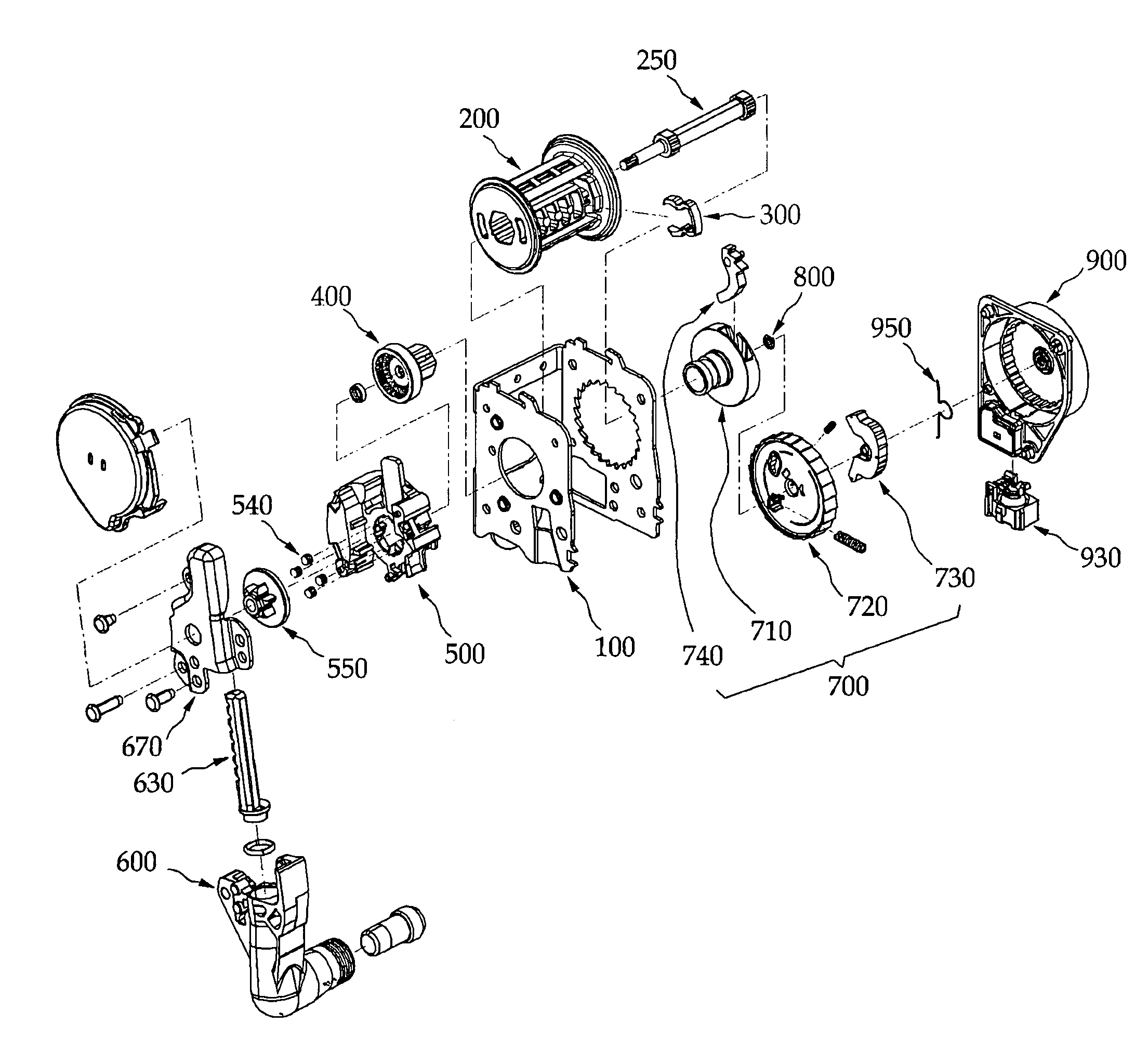Seat belt retractor
a seat belt and retractor technology, applied in the field of seat belt retractors, can solve the problems of increasing the inability to operate the webbing winding apparatus normally, and the increase in the manufacturing cost of the retractor, so as to reduce the weight of the seat belt retractor and simplify the manufacturing process.
- Summary
- Abstract
- Description
- Claims
- Application Information
AI Technical Summary
Benefits of technology
Problems solved by technology
Method used
Image
Examples
first embodiment
[0300]As shown in FIGS. 28 and 29, a locking member coupling structure of the seat belt retractor in accordance with the present invention includes a leaf spring 725 fixed to a boss 721 of a locking clutch 720, and a fixing piece 731 projecting from a lock arm 730 to fix the leaf spring 725.
[0301]In this embodiment, a locking member 700 is installed at the seat belt retractor to allow a webbing to be smoothly released or rewound when the webbing is released with a normal speed, and prevent the webbing from being released or rewound when the webbing is rapidly released or rewound.
[0302]The locking member 700 includes a guide drum 200 rotatably installed at a housing 100 constituting a main body of the seat belt retractor, a locking base 710 fixed to one side of the guide drum 200, a locking clutch 720 rotatably engaged with one side of the locking base 710, and the lock arm 730 installed at one side of the locking clutch 720 to be pivoted to a limited angle.
[0303]As shown in FIGS. 28...
second embodiment
[0320]FIG. 30 is a side view of a locking member coupling structure of a seat belt retractor in accordance with a second exemplary embodiment of the present invention.
[0321]In this second embodiment, like reference numerals designate like components in the first embodiment, and descriptions thereof will be omitted.
[0322]In contrast to the first embodiment, one end of a leaf spring 725a of the second embodiment is fixed to a stopper 724 in the vicinity of a boss 721. That is, though one end of the leaf spring 725a of the first embodiment is fixed to the boss 721, one end of the leaf spring 725a of the second embodiment is fixed to the stopper 724, and the other end of the leaf spring 725a is fixed to a fixing piece 731 of a lock aim 730.
[0323]Since the leaf spring 725a of the second embodiment is fixed to a different position than the first embodiment and the locking clutch 720 and the lock arm 730 are operated in the same manner as the first embodiment, a description thereof will be...
third embodiment
[0324]A third embodiment of the present invention will be described with reference to FIG. 31.
[0325]As shown in FIG. 31, one end of a torsion spring 725b is in contact with one side of a lock arm 730. The torsion spring 725b extends in a rotation center direction of the lock arm 730 to be wound on a rotation center of the lock arm 730 at its intermediate portion in a circular or arcuate shape. The other end of the torsion spring 725b is fixed to one side of a stopper 724.
[0326]That is, the torsion spring 725b extends from both ends thereof to form a predetermined angle in a symmetrical manner with reference to a rotation center of the lock arm 730 such that one end is in contact with the lock arm 730 and the other end is fixed to the stopper 724.
[0327]The one end of the fixed torsion spring 725b is a free end such that the lock arm can be pivoted within a limited angular range, and the other end of the torsion spring 725b is an end securely fixed to the stopper 724.
[0328]Similar to ...
PUM
 Login to View More
Login to View More Abstract
Description
Claims
Application Information
 Login to View More
Login to View More - R&D
- Intellectual Property
- Life Sciences
- Materials
- Tech Scout
- Unparalleled Data Quality
- Higher Quality Content
- 60% Fewer Hallucinations
Browse by: Latest US Patents, China's latest patents, Technical Efficacy Thesaurus, Application Domain, Technology Topic, Popular Technical Reports.
© 2025 PatSnap. All rights reserved.Legal|Privacy policy|Modern Slavery Act Transparency Statement|Sitemap|About US| Contact US: help@patsnap.com



